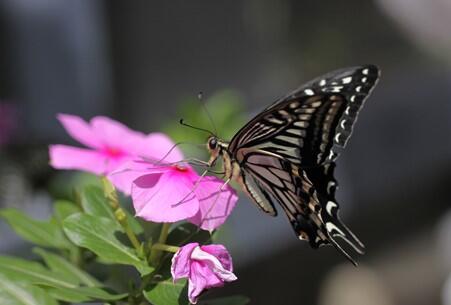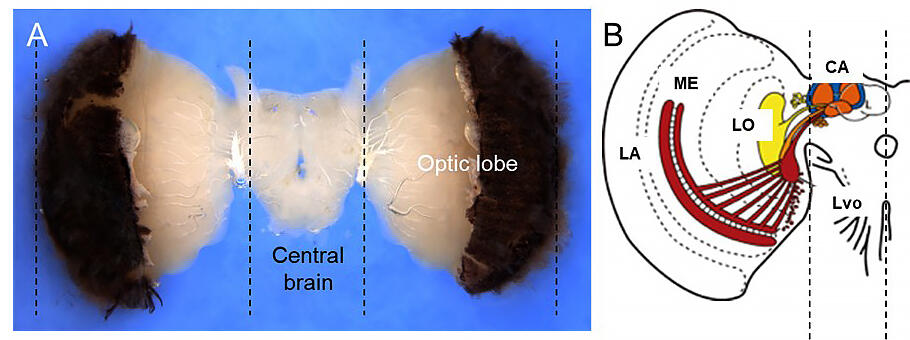
Provided by the Graduate University for Advanced Studies
The flower foraging swallowtail butterfly has color vision so acute that they can distinguish colors in greater detail than humans, but researchers have not known where the color center was in the brain until now. A research group led by Associate Professor Michiyo Kinoshita of the School of Advanced Sciences at the Graduate University for Advanced Studies, recorded responses to the light spectrum (UV to red light) from a group of nerves in the brain of swallowtail butterflies in a region called the mushroom body and identified its shape with the aim of finding the of color center.
According to Associate Professor Kinoshita, "Since swallowtail butterflies distinguish colors in detail, we thought that insect brains, like those of monkeys, have cells that distinguish color in acute detail. Our research used in vivo intracellular recording and staining methods that allowed us to identify a number of cells that finely distinguish colors in the optic nerves in the mushroom body, the insect's memory center."
In the insect brain, light information detected by the retina is processed in the visual center and integrated with other sensory information in the brain. The research group found three nerve cords (mushroom body optic nerves) that enter the mushroom body in the brain from the visual center. This visual input to the mushroom body is thought to be a learning pathway for visual information. Since swallowtail butterflies are also adept at learning colors, the group conducted research under the hypothesis that the mushroom body optic nerves of swallowtails contain color information.
Most of the mushroom body optic nerves the group was able to record showed a relatively low frequency of action potentials (short-lived spikes in potential changes) when not subjected to light. When the group subjected the swallowtails to 23 kinds of flashed colored light (750 milliseconds) in the 300 to 740 nanometer spectrums, the mushroom body optic nerves responded excitably to monochromatic light in a very narrow wavelength range (420 nanometers) and showed an inhibitory response to light in a broad wavelength range (440-500 nanometers). This response is called color opponency and is considered an important neural property involved in processing color information.

Cortical-like colour-encoding neurons in the mushroom body of a butterfly. Current Biology
DOI: https://doi.org/10.1016/j.cub.2021.12.032
Provided by the Graduate University for Advanced Studies
This kind of response is also different from the wavelength response properties of any of the photoreceptor cells in the retina. It was also different from the color opponent nerve cells that can be explained by the photoreceptor cell characteristics found in honeybees and Drosophila. This suggests that the mushroom body optic nerve in swallowtail butterflies is more advanced in information processing.
According to Associate Professor Kinoshita, "Swallowtail butterflies can see illusions like those of humans, so I would like to investigate in detail the extent to which the nerves studied in this research represent the world as seen by swallowtail butterflies. In the future, I want to use these results to create a virtual reality that allows us to simulate the world as seen by swallowtail butterflies."
This article has been translated by JST with permission from The Science News Ltd.(https://sci-news.co.jp/). Unauthorized reproduction of the article and photographs is prohibited.




